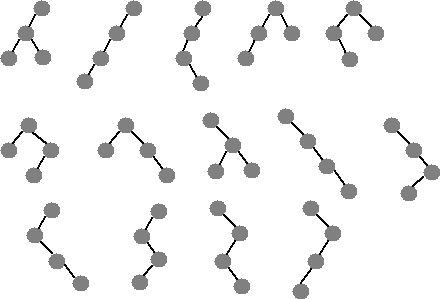
If there are n levels in a complete tree (the tree on the left above has two levels, the tree on the right has four) what is the total number of nodes in the complete tree (both leaves and internal nodes) and the total number of leaves in the complete tree. Express answers in terms of n.
x p q r s a d k z oThe in-order traversal of the same tree is the following, draw the unique binary tree with these pre- and in-order traversals.
q p r s x d k z a o

- Draw all five of the different binary trees with three nodes.
- Using the information about how many trees there are with
1, 2, 3, and 4 nodes determine how many different binary trees
there are with 5 nodes. Do not draw them, but reason
about how many there must be based on:
- There is a root node.
- There are four other nodes that are distributed between the left and right subtrees.
- Can you make a different number of legal BSTs with different elements? That
is, can you make a different number of trees with the elements
(1,1,1) vs. (1,2,3) vs. (-4,72,0)? Why or why not?
- Complete the BST count APT. Will you solution return an answer in under 3 seconds for trees with 25 elements?